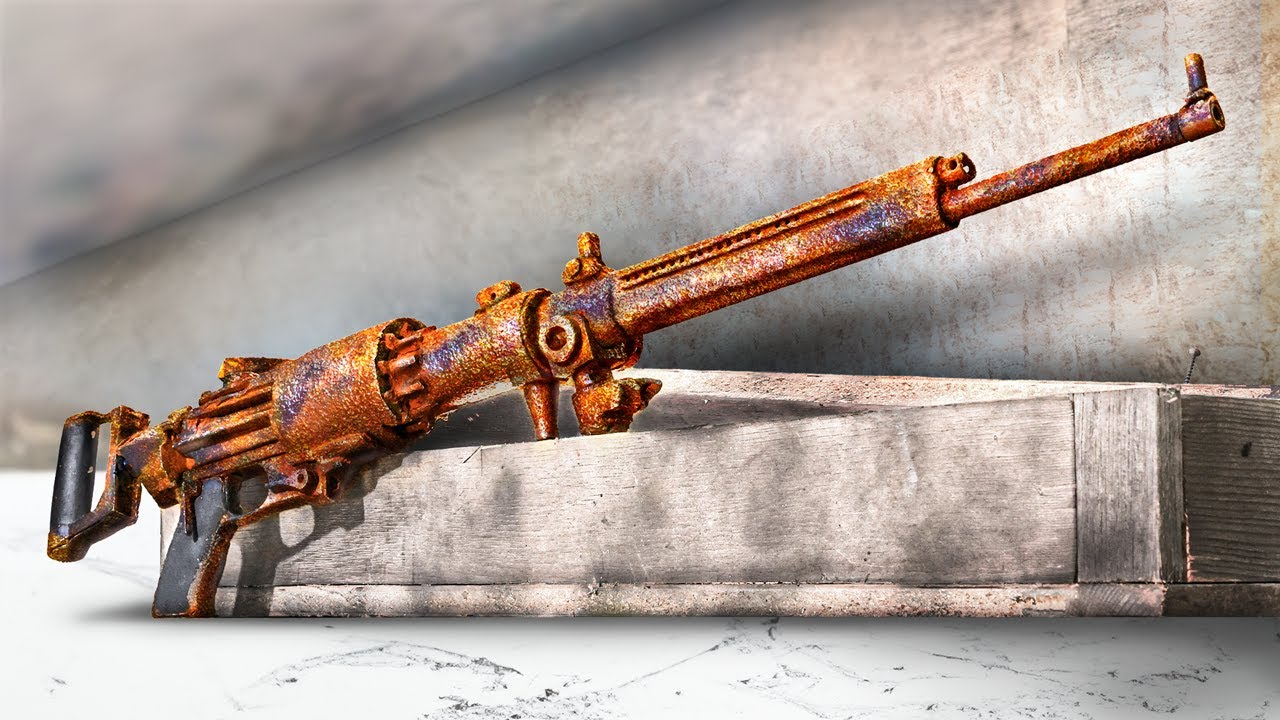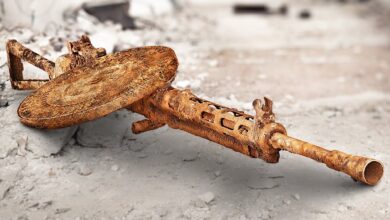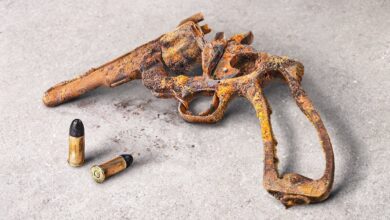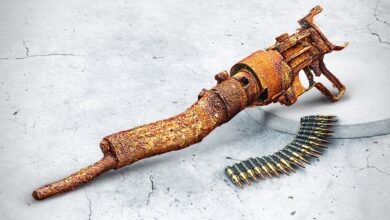Restoration of the 1942 ShKAS: A Journey into the Past
The 1942 ShKAS (Shpagin, Konstruktivnaya Avtomaticheskaya Stankovaya, or Shpagin’s Automatic Aircraft Gun) is a significant piece of history in the world of firearms, particularly in the context of World War II and Soviet military technology. The ShKAS was a Soviet-designed, air-cooled, belt-fed, gas-operated machine gun, initially developed for use in aircraft. It was widely used by the Soviet Union throughout World War II, playing a pivotal role in the aviation battles of the Eastern Front. Today, the restoration of the 1942 ShKAS represents an effort to preserve an essential piece of military heritage and to understand the design and functionality that made this weapon a formidable tool of war.

The Origins and Design of the 1942 ShKAS
The ShKAS was designed in the early 1940s by the Soviet engineer Vasily Shpagin, who was renowned for his work on automatic weapons. The gun was introduced in 1942, a time when the Soviet Union was engaged in a brutal conflict with Nazi Germany and their allies. ShKAS was designed as a replacement for the older PV-1 and PV-2 machine guns, offering improved reliability, higher rates of fire, and greater ease of use in combat situations.
What set the ShKAS apart from many other aircraft-mounted machine guns of the time was its high rate of fire—up to 1,500 rounds per minute. This made it one of the fastest-firing machine guns in its category, enabling Soviet pilots to unleash a barrage of bullets on enemy aircraft with devastating effect. Its chambered 7.62x54mmR ammunition, while not the most powerful by modern standards, provided sufficient stopping power against enemy aircraft, armored vehicles, and even ground troops.
The ShKAS was mounted on several Soviet aircraft, including the famed Ilyushin Il-2 Sturmovik, a ground-attack aircraft that played a crucial role in Soviet victories on the Eastern Front. Due to its effectiveness and reliability, the ShKAS was used in both offensive and defensive roles in Soviet aviation.
The Need for Restoration
As time passed, the ShKAS machine gun, along with many other pieces of World War II weaponry, became obsolete, and many were decommissioned or destroyed. However, for collectors, historians, and military enthusiasts, the ShKAS remains a symbol of Soviet ingenuity during a time of global conflict. Despite its historical importance, the 1942 ShKAS, like many World War II firearms, has been subject to the ravages of time, corrosion, and neglect.
Restoring such an important piece of history not only preserves the physical machine gun but also ensures that future generations can appreciate the craftsmanship and technical advancements that went into its creation. The restoration process is not only about making the machine gun function again but also about maintaining its authenticity and ensuring that it is as close as possible to the original design.
The Restoration Process
The restoration of a 1942 ShKAS is a meticulous and complex process that involves multiple stages. The goal is to return the machine gun to its original condition, ensuring both mechanical functionality and historical accuracy.
-
Disassembly and Assessment: The first step in any restoration is to carefully disassemble the weapon to examine each part for wear, corrosion, or damage. Each component—from the barrel to the trigger mechanism—must be carefully inspected. Some parts, such as the receiver and barrel, may need to be cleaned, while others may require replacement or significant repair.
-
Cleaning and Preservation: Given the age of the ShKAS, corrosion and rust are common issues. A restoration expert will typically use specialized tools, such as ultrasonic cleaning machines, to remove dirt, debris, and corrosion from the metal surfaces. For more delicate components, hand-cleaning with fine abrasives or solvents is often necessary. Rusted parts may need to be restored or replaced with new, custom-made components, often using the same materials that were available during the gun’s original production.
-
Replacement of Worn Parts: Over the years, some components of the ShKAS may have worn out or been lost. Finding original parts can be a challenge, and restoration experts often need to source these from private collectors, museums, or other historical gun owners. If original parts are not available, reproductions are crafted to match the exact specifications, ensuring the gun’s historical integrity is preserved.
-
Reassembly and Testing: Once the parts have been cleaned and repaired, the ShKAS is reassembled. The restoration team then conducts a series of tests to ensure that the machine gun functions correctly. This includes checking the gas-operating mechanism, belt feed, and the firing mechanism. If necessary, the machine gun is test-fired (in a safe and controlled environment) to ensure everything works properly.
-
Final Detailing: Once functional restoration is complete, the ShKAS is carefully polished and detailed to match its original appearance. This may involve restoring markings, paint, and finish to their correct WWII-era specifications.
The Importance of Historical Preservation
Restoring a machine gun like the 1942 ShKAS is not just about making it look like new—it’s about preserving a crucial piece of history. Every restored ShKAS is a testament to the engineers and soldiers who relied on it during the heat of battle. These firearms tell the story of the Soviet Union’s technological advancements, its military efforts, and the lives of the men and women who fought in World War II.
Additionally, the restoration process offers valuable insights into the materials, techniques, and craftsmanship used by Soviet arms manufacturers during the war. Modern restorers have to employ a combination of historical research, technical knowledge, and practical skills to recreate the conditions of the past and preserve these weapons for future generations.
Conclusion
The 1942 ShKAS machine gun is a powerful symbol of Soviet military prowess during World War II. The restoration of these historic firearms serves as a bridge between the past and the present, allowing us to preserve a piece of the war’s legacy and to appreciate the incredible technology that played a pivotal role in the outcome of the conflict. Through careful restoration, the 1942 ShKAS remains not just a weapon but a testament to history, craftsmanship, and the sacrifices of those who lived through one of the most transformative periods in human history.





